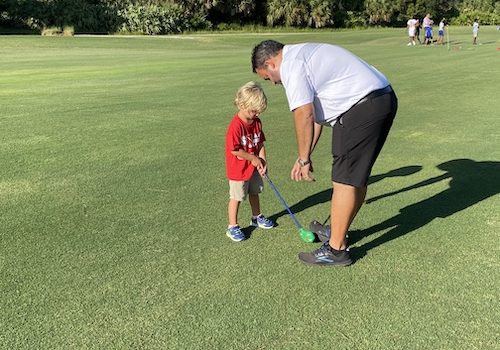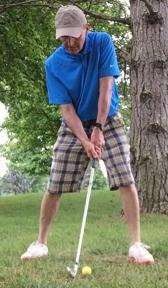
Explore the Different Parts of a Golf Course

Each golf course presents a different set of challenges depending on the layout and design of the course. But golfers may also encounter a few similar elements that they can find at most courses. Understanding the essential parts of a golf course, such as greens, fairways, and bunkers will better equip golfers for success on the links. Here, we talk about the different parts of a gold course and what to expect from golf courses in Melbourne!
Some parts of the golf course you’ll maneuver the ball through will be:
- Tee
- Fairway
- Rough
- Green
- Hazard
Tee
The tee is located in the tee box where each hole begins. The tee box is a close-cut area of grass at the starting point of the hole. Many golf courses have several tee boxes available to players to choose from based on the golfer’s skill level. Usually, tees near the fairway are meant for beginners, while more advanced players are better suited to hit from the back tees. It’s not uncommon for the tee boxes to be marked with a recommended skill level to make it easy for players to decide where to start. Once the golfer has chosen where to tee off, they can ready the ball up to two meters behind them and take a swing.
Fairway
The fairway is a stretch of short grass between the tee box and the putting green. Most local clubs will have a fairway as long as 30 to 50 feet. Ideally, the golfer will want to hit the ball from the tee and land the ball in this area. Other than par-3s, the fairway is the target for golfers on all holes. Once the ball lands in the fairway, a second shot from here should be a piece of cake compared to making a shot from the rough. The fairways allow for the ball to spin and reach the hole on the green.
Furthermore, the golfer’s strategy may change depending on the kind of grass on the fairway. There are four types of grass of various heights that golfers can find on the fairway:
- Bentgrass: 7/16 to 1/2 inch
- Ryegrass: 3/4 to 1.25 inches
- Bermuda: 1/2 to 3/4 inch
- Fine fescues: 7/16 to 1/2 inch
Rough
The rough is one area on the course where one should avoid landing a golf ball. This longer-cut area of grass surrounds the fairway and the green. In fact, the farther the rough is from the fairway and green, the longer the grass is allowed to grow. One trick for hitting from the rough is to play the ball slightly back while in position and tighten grip on the club. It’s usually difficult and unpredictable to hit a ball from the rough. It’s best to avoid the rough, but if you end up in this situation, here are some tips to help:
- Use a heavy club and with plenty of loft
- Play the ball slightly back while in position and grip down on the club a bit
- Have the clubface make direct contact with the ball
Green
The green, also known as the putting green, is where the hole and flagstick are located. The goal of the game of golf is to get the golf ball into the hole on the putting green. Moreover, every course ends at the putting green.
The grass on the green is the most closely mowed area on the course. It’s mowed short so that the ball can easily roll. Before a player takes a shot on the green, they must read the ground conditions. To read the conditions of the green, the player should take note of the highest point on the surface because putts will usually roll away from that point. The green can also vary depending on the conditions of the course. For example for Golf courses in Melbourne, especially in wet, humid conditions like Florida; the green will slow the ball down and approach shots will stick.
Hazard
Beyond the rough, another set of obstacles to avoid on the course are hazards. Hazards are lakes, creeks, ponds, and other areas marked with yellow or red stakes. However, a golfer may still play a ball if it lands in a hazard, but sometimes it’s simply too difficult to play.
There are two types of hazards in a typically challenging course:
- Bunkers – these are holes in the ground filled with sand spread around the fairway and the putting green
- Water – any form of water that surrounds the fairways and the putting green
Like rough, your goal is to avoid these hazards at all costs. If the golfer has their ball in the rough, they can move it back to the fairway or into the green with a sand wedge, a lob wedge, or a pitching wedge. However, if the player cannot hit the ball, they must take a one-stroke penalty and either hit the ball again or drop near the hazard, but not closer to the hole. Sand traps also are considered hazards, but the golfer can hit out of them with no penalty.
Any of these parts can challenge the way a golfer approaches a hole. Understanding their characteristics and conditions can help individuals with club selection and plan their shots more carefully.
Learn the Ropes with Indian River Golf Foundation
Golf doesn’t have to be intimidating. Take the first step in becoming a golf expert today.
If you’re ever looking for golf courses in Melbourne with great amenities and educated trainers, Indian River Golf Foundation is a top resource for golfers of all ages who want to learn and excel in their golf skills. We have mentors for every type of golfer, no matter the experience level.
Want to join our foundation in Indian River County? Our Founder and President of IRGF, Roger Van Dyke, is happy to receive all inquiries. He is available by email at rogervandykeirgf@gmail.com or by phone at 772-713-9593. We have many different training options, such as player development and after-school training.
We can’t wait to help you improve your game and develop life skills through golf.




This Post Has 0 Comments